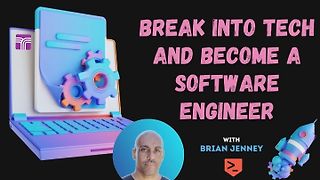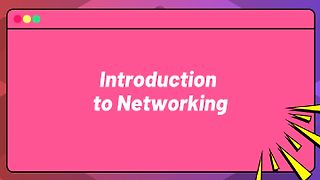The Complete Apache Kafka Practical Guide
Course description
This is the most complete practical Apache Kafka guide that includes tons of practical activities. Most important is that you'l learn how Apache Kafka works and knowing it you will be able much more easier use its features and fix mistakes in the future after you'll finish this course. You can have zero knowledge about Apache Kafka, Java, Node.js or Python. All will be taught from scratch, from basic to advanced features. If you want to get deep knowledge of Apache Kafka this course is for you!
Read more about the course
We will start by installing Apache Kafka on your computer, VPS (Virtual Private Server) or Virtual Machine on your computer. You will learn that installation of Apache Kafka is pretty easy - you just need to download archive with executable scripts and run them. Also you will learn and practice how to run multiple brokers on the same computer.
Afterwards we will jump into tons of practice activities and use different Apache Kafka features and built-in scripts. You will launch Zookeeper, multiple Brokers, Console Consumer and Console Producer. Also you will test performance of the Kafka Cluster using built-in utility called Performance Monitor.
In practice sections you will perform multiple practice Apache activities:
Create cluster with multiple brokers
Create topic with multiple partitions spread across different brokers
Create topics with replication factor that allows you to store copy of every message on different brokers for redundancy
Produce messages using built-in Console Producer
Consume messages using built-in Console Consumer
Launch multiple consumers in the same consumer group
Launch Performance Monitor for testing Consumers and Producers performance and speed
You will also learn and practice how to use Apache Kafka API to create your own Consumers and Producers
Create Java Maven project
Launch Producer and Consumer using Java
Launch multiple consumers in the same Consumer Group
Understand and practice difference between "subscribe" and "assign"
Create Node.js project
Launch Producers and Consumers using Node.js
Create Python project
Launch Producers and Consumers using Python
During the course you will need to view and edit text files. For that you will NOT use terminal. Instead you will use GUI application VisualStudio Code. Also all configuration files and project files are available in the GitHub repository. This means that during this course you will also learn how to use :
Git and GitHub
VisualStudio Code
Watch Online
| # | Title | Duration |
|---|---|---|
| 1 | Apache Kafka Installation Overview | 01:07 |
| 2 | Installing Apache Kafka on the Mac and Unix-like systems | 00:53 |
| 3 | Installing Apache Kafka on the Mac | 05:25 |
| 4 | Installing Ubuntu on MacOS using VirtualBox | 12:41 |
| 5 | SECTION 2 Introduction | 01:00 |
| 6 | Creating remote Ubuntu Virtual Private Server | 06:16 |
| 7 | Installing Apache Kafka on Virtual Private Server | 07:05 |
| 8 | SECTION 3 Introduction | 01:03 |
| 9 | Installing Apache Kafka on Windows | 08:26 |
| 10 | Starting Zookeeper and Kafka server on Windows | 06:32 |
| 11 | Installing Ubuntu on Windows using VirtualBox | 11:39 |
| 12 | Installing Apache Kafka on Ubuntu using GUI | 06:16 |
| 13 | SECTION 4 Introduction | 01:03 |
| 14 | Observing contents of the Kafka folder | 05:56 |
| 15 | Reading and editing Kafka files using VisualStudio Code | 06:20 |
| 16 | Trying to start Kafka Server | 04:11 |
| 17 | Observing Kafka Server logs | 01:43 |
| 18 | Starting Zookeeper | 03:12 |
| 19 | Starting Kafka Server while Zookeeper is up and running | 06:12 |
| 20 | Observing logs folder and current kafka server setup | 04:44 |
| 21 | SECTION 5 Introduction | 00:30 |
| 22 | How to connect to Kafka cluster | 02:19 |
| 23 | Create new Kafka topic | 05:05 |
| 24 | What happened after creation of the new topic | 03:36 |
| 25 | Read details about topic | 05:22 |
| 26 | SECTION 6 Introduction | 00:44 |
| 27 | Send some messages using Kafka Console Producer | 03:13 |
| 28 | Consuming messages using Kafka Console Consumer | 03:19 |
| 29 | Consuming messages from the beginning | 01:36 |
| 30 | Running multiple consumers | 01:31 |
| 31 | Running multiple producers | 03:14 |
| 32 | What was changed in the Kafka logs | 09:33 |
| 33 | SECTION 7 Introduction | 01:36 |
| 34 | What is Apache Kafka | 04:01 |
| 35 | Broker | 02:28 |
| 36 | Broker cluster | 01:54 |
| 37 | Zookeeper | 01:59 |
| 38 | Zookeeper ensemble | 03:30 |
| 39 | Multiple Kafka clusters | 02:20 |
| 40 | Default ports of Zookeeper and Broker | 03:49 |
| 41 | Kafka Topic | 02:33 |
| 42 | Message structure | 03:34 |
| 43 | Topics and Partitions | 04:34 |
| 44 | Spreading messages across partitions | 05:28 |
| 45 | Partition Leader and Followers | 06:24 |
| 46 | Controller and it's responsibilities | 05:17 |
| 47 | How Producers write messages to the topic | 02:15 |
| 48 | How Consumers read messages from the topic | 03:34 |
| 49 | SECTION 8 Introduction | 00:46 |
| 50 | GitHub repository and list of basic Kafka commands | 07:33 |
| 51 | Diagrams for the course | 03:43 |
| 52 | SECTION 9 Introduction | 00:53 |
| 53 | Cleaning up existing kafka installation | 02:14 |
| 54 | Creating topic with multiple partitions | 06:00 |
| 55 | How messages were spread across different partitions | 06:20 |
| 56 | Reading messages from specific partition | 02:45 |
| 57 | Reading messages from specific offset in specific partition | 05:45 |
| 58 | Reading details about topic and __consumer_offsets topic | 06:46 |
| 59 | Summary for multiple partitions example | 01:57 |
| 60 | SECTION 10 Introduction | 00:58 |
| 61 | Example overview - run multiple brokers | 01:26 |
| 62 | Creating separate configuration files for brokers | 05:35 |
| 63 | Launching three brokers | 02:41 |
| 64 | Getting cluster information and broker details from Zookeeper | 02:48 |
| 65 | Creating multiple-partition topic in the Kafka cluster | 03:17 |
| 66 | Looking at logs folders of every broker | 02:14 |
| 67 | Producing and consuming messages in the cluster | 03:34 |
| 68 | Details about topic in the cluster | 03:28 |
| 69 | Simulating broker failure in the cluster | 05:55 |
| 70 | Summary for broker cluster and topic without replication | 01:46 |
| 71 | SECTION 11 Introduction | 01:24 |
| 72 | Preparing for the next example with replication | 02:42 |
| 73 | Launching brokers and creating topic with replication | 04:42 |
| 74 | Observing logs folder and details of the topic | 06:06 |
| 75 | Producing and consuming messages in the topic with replication | 06:10 |
| 76 | Observing how messages were stored in the partitions on different brokers | 03:06 |
| 77 | Bringing down one of three brokers and observing changes | 03:34 |
| 78 | Bringing down another broker in the cluster | 03:45 |
| 79 | Bringing back both brokers | 01:58 |
| 80 | Summary for replication | 01:37 |
| 81 | SECTION 12 Introduction | 00:52 |
| 82 | Example with consumer groups overview | 01:01 |
| 83 | Exploring default consumer groups | 10:01 |
| 84 | Starting consumer in the custom consumer group | 08:13 |
| 85 | Starting second consumer in the same consumer group | 04:41 |
| 86 | Launching one more consumer in the same group | 02:00 |
| 87 | Idle consumers in the group | 05:52 |
| 88 | Summary for consumer groups | 01:49 |
| 89 | SECTION 13 Introduction | 00:49 |
| 90 | Overview of the performance testing example | 01:19 |
| 91 | Starting cluster and launching basic performance test | 04:23 |
| 92 | Increasing performance test parameters | 02:52 |
| 93 | Testing consumer performance | 03:19 |
| 94 | Getting non-zero LAG values for consumers | 05:19 |
| 95 | Performance test example summary | 00:59 |
| 96 | SECTION 14 Introduction | 01:46 |
| 97 | Project Files for the Java section | 01:06 |
| 98 | Installing IntelliJ editor | 03:23 |
| 99 | Creating and configuring Maven project | 05:41 |
| 100 | Starting Kafka Cluster | 01:39 |
| 101 | Creating Java Producer | 07:05 |
| 102 | Continue Creating Java Producer | 07:07 |
| 103 | Launching Java Producer | 05:05 |
| 104 | Explaining most common Producer parameters | 12:05 |
| 105 | Modifying Serializer type | 05:28 |
| 106 | Producing meaningful messages with delay | 06:07 |
| 107 | Refactoring Producer by adding previous example | 02:53 |
| 108 | Creating consumer with autocommitting - PART 1 | 07:49 |
| 109 | Creating consumer with autocommitting - PART 2 | 08:32 |
| 110 | Consumer parameters overview | 06:25 |
| 111 | Consumer with Manual Committing | 10:34 |
| 112 | Consumer with Partitions Assignment | 05:37 |
| 113 | Launching multipile consumers in the same consumer group | 07:42 |
| 114 | CHALLENGE - Subscribe vs Assign with consumer groups | 01:55 |
| 115 | SECTION 15 Introduction | 00:55 |
| 116 | Installing Node.js with NPM | 01:56 |
| 117 | Starting up Kafka cluster with 3 brokers | 02:21 |
| 118 | Initializing Node.js project | 01:38 |
| 119 | Final Node.js project files | 01:15 |
| 120 | Creating basic Node.js producer | 07:03 |
| 121 | Producing random animal names | 06:43 |
| 122 | Creating Node.js consumer | 04:54 |
| 123 | SECTION 16 Introduction | 00:44 |
| 124 | Installing Python | 01:41 |
| 125 | Final Python project files | 00:44 |
| 126 | Launching basic Python producer | 05:36 |
| 127 | Launching consumer and receiving messages | 03:37 |
| 128 | Generating fake names in the messages by producer | 06:02 |
| 129 | Course Summary | 01:08 |
Similar courses

Computer Systems

Break Into Tech And Become A Software Engineer

Photography Masterclass: A Complete Guide to Photography

Introduction to Networking
